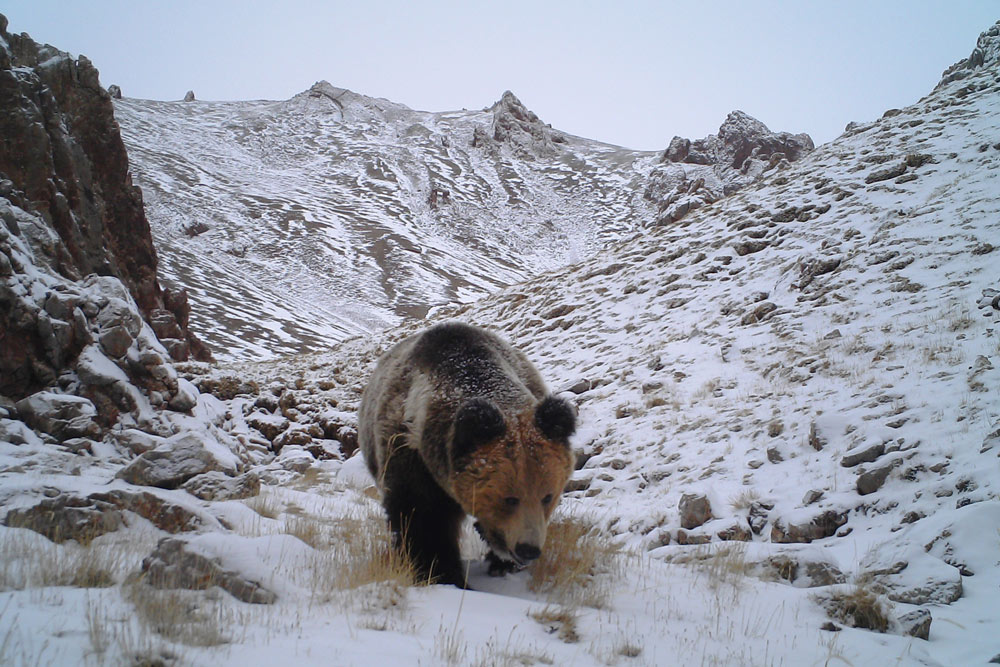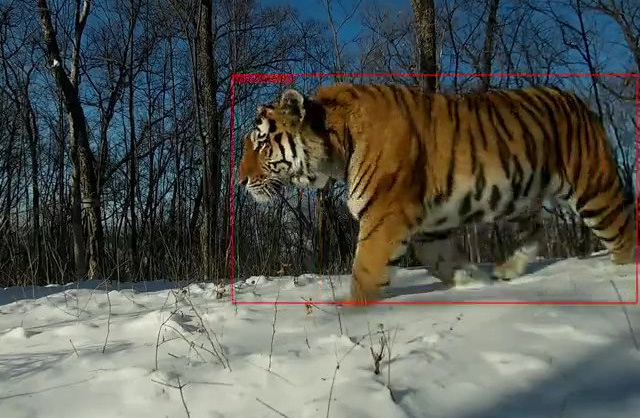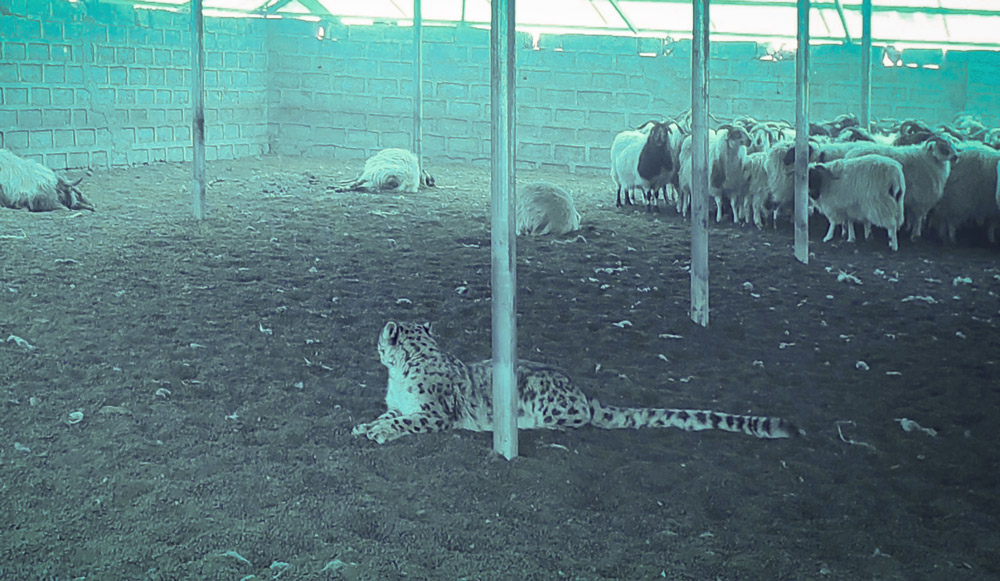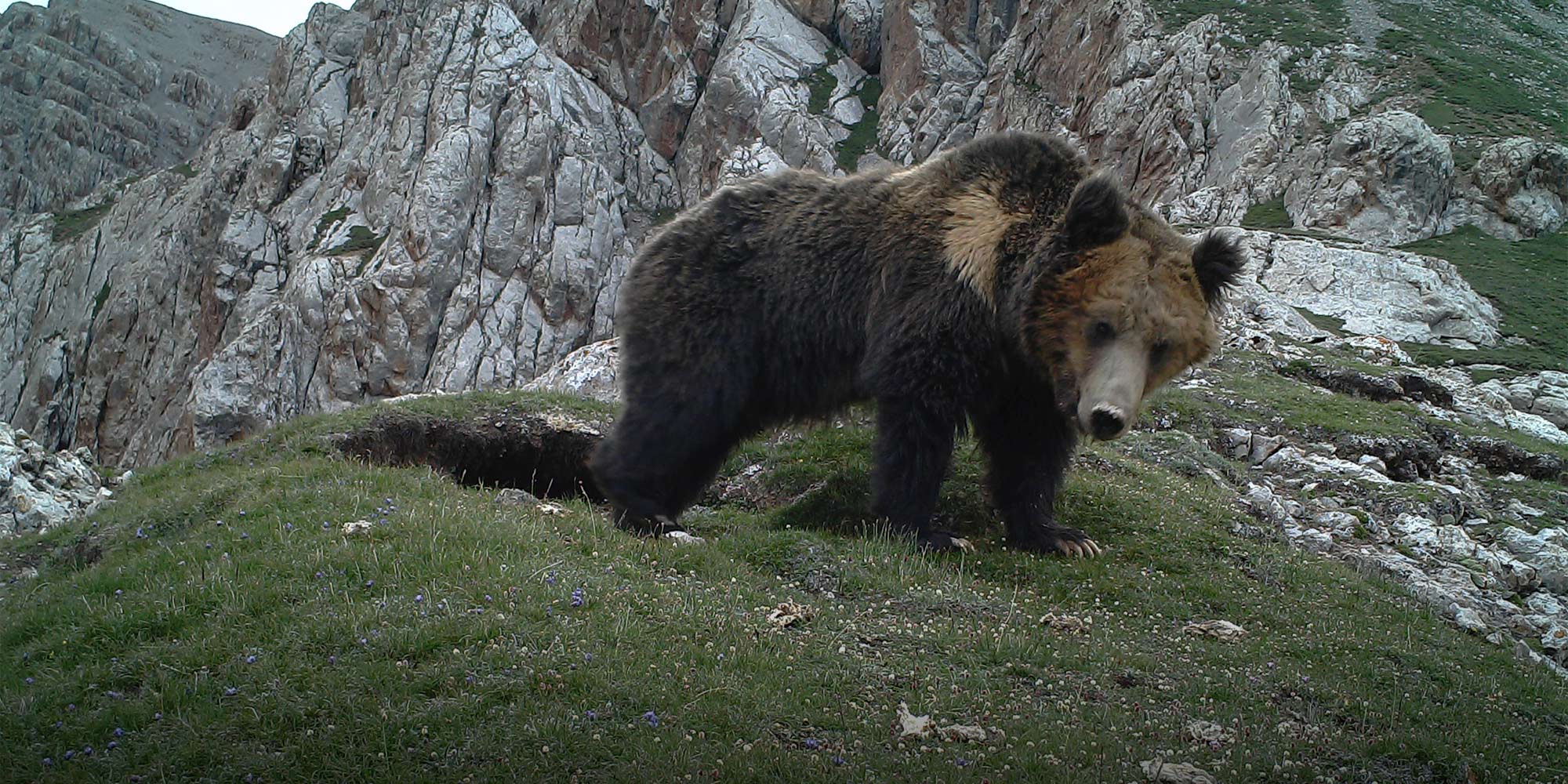beijingwalker
ELITE MEMBER

- Joined
- Nov 4, 2011
- Messages
- 65,187
- Reaction score
- -55
- Country
- Location
Why Tigers, Bears, and Elephants Keep Wandering Into Chinese Towns
In recent years, China has clamped down hard on the killing of protected species. Now, the animals appear to be losing their fear of humans — and reclaiming their former habitats.Aug 20, 2022
On April 21, 2021, local people in Baiyuwan Village in northeast China’s Heilongjiang province were alarmed to discover a Siberian tiger padding through their fields. Spooked, the tiger charged a car, breaking one of its windows, and knocked over a bystander.
No one was seriously hurt in the end, and local forestry officials soon arrived to tranquilize and capture the animal. They named the tiger Wandashan-1 after the nearby Wanda Mountains, where he was later released back into the wild.
But the episode — which came to be known as the 21/4 Tiger Incident — still caused a stir. “We hadn’t seen a tiger here for 50 years,” one local told Sixth Tone’s sister site The Paper.
We hadn’t seen a tiger here for 50 years.
— Baiyuwan Village resident
Unusual sightings like this are on the rise in China. Large, rare animals are showing up unexpectedly in towns and villages across the country — often for the first time in decades, or even centuries.
Elephants hadn’t been seen near Kunming, the capital of southwest China’s Yunnan province, for around 1,000 years. Until last June, when a 15-strong herd entered the city’s outskirts after marching 500 kilometers from the forests of Xishuangbanna Prefecture.
Snow leopards normally avoid all contact with people. But in March, one was filmed walking on the fence of a primary school in Menyuan, a town in northwest China’s Qinghai province. Dazed after leaping straight into a glass wall, the cat was captured and released back into the wild.
Why have so many animals begun wandering into populated areas in China, apparently unafraid of the people living there?

A Tibetan brown bear on the Qinghai-Tibetan Plateau in Qinghai Province, March 2017. Courtesy of Dai Yunchuan
COP crackdown
In Kunming, locals joked that the elephants had come to the city to attend COP-15, the United Nations biodiversity conference that was held there last October. And the event may in fact have played a role — albeit indirectly — in the animals’ journey.
The theme of COP-15 was “building the ecological civilization” — correcting past damage to the environment and creating a sustainable coexistence with nature. In China, the build-up to the conference was accompanied by a sweeping crackdown on wildlife violations, with those caught killing grade-1 protected animals handed decadelong prison sentences.
The clampdown — together with a series of projects to protect and restore local ecosystems — has been a game-changer for animal protection in the country, conservation experts told Sixth Tone. A number of flagship species — from Siberian tigers to snow leopards — have started to make a comeback.
Terry Townshend, a conservation economist and long-term Beijing resident, said there has been “a huge change in the responsiveness of law enforcement to wildlife crimes.” When the Brit isn’t working his day job at the Paulson Institute, he is a dedicated birdwatcher.

Left: Terry Townshend stands next to an infrared camera trap he set up at Mount Ling in Beijing; Right: A roe deer caught by the infra red camera trap. Li Pasha for Sixth Tone
“My experience with birds is chalk and cheese compared with when I first came here in 2010,” said Townshend. “I was finding illegal nets frequently, but the police were not interested. Now, I have a local policeman on WeChat. He will be there in half an hour if I find something.”
Dai Yunchuan, an ecologist at Chongqing Academy of Social Sciences, agrees.
“There has been a lot of progress in wildlife protection,” said Dai. “The legislation protecting wild animals has been strengthened — enforcement too — and national parks were created.”
The increase in conservation efforts also appears to be driving changes in animal behavior. Many species are expanding their habitats and increasingly straying into residential areas. In some regions, they even appear to be losing their fear of humans, having learned that they’re unlikely to be harmed.
Brown bears realized that around buildings, and inside if you break in, you can find high-energy food — sugar, butter.
— Dai Yunchuan, ecologist
Dai has spent years studying a rise in human-bear conflict on the Tibetan Plateau, where brown bears are now raiding dumpsters for food and breaking into houses. Last year, domestic media reported on Tibetan bears stealing food from army bases and getting stuck in garbage pits.
The raids are partly a result of the growing Tibetan brown bear population, Dai said. No detailed studies on local bear numbers have been done, but ecologists generally agree that they’re increasing. However, the biggest factor is the changing behavior of both herders and bears, he added.
“In 1995, the government started to build winter homes for nomadic herders,” said Dai. “Brown bears realized that around buildings, and inside if you break in, you can find high-energy food — sugar, butter. The bears then passed this behavior to the next generation.”
Decades ago, the Tibetan nomads would fire their guns to scare away the bears. But in the early 2000s, China confiscated all hunting weapons, and the bears are no longer afraid of people. Plus, the law is now on the side of the bears.
“A bear can break into your home, hurt you, or even kill someone, but you cannot kill the bear — you will go to jail!” Dai said.

00:09
A bear in a house in Sanjiangyuan, Qinghai province. Courtesy of Dai Yunchuan
The brown bear is a protected species in China. Article 341 of China’s criminal law prohibits capturing, killing, and harming endangered species of wild animals. While the law was rarely enforced in the past, the number of prosecutions has risen dramatically in recent years.
China Judgments Online, a public database of court records, only lists one case related to an Article 341 violation for 2000, the first year for which records are available. In 2021, there were over 2,000 such cases.
Dual citizens
In northeast China’s Heilongjiang province, home to Siberian tigers, prosecutions involving Article 341 have risen from 12 in 2012 to over 100 per year today. One case shows the severity of sentences for killing a tiger, a grade-1 protected species: two poachers got 13.5 and 11 years behind bars, respectively.
In the early 2000s, about half a dozen Siberian tigers were thought to be left in China, but a concerted conservation campaign has brought the big cats back from the brink. The remaining tiger habitats near China’s border with Russia have been declared protected areas and cleared of traps and snares set for deer and boar — the tigers’ main prey.
Now, there are between 30 and 50 Siberian tigers in Jilin and Heilongjiang provinces. Video footage of tigers crossing roads in China, filmed by passing motorists, has become a feature of local news broadcasts. Many of these tigers are “dual citizens,” commuting back and forth between Russia and China.

A screenshot from a surveillance video clip taken on Nov. 27, 2021 shows the wild Siberian tiger “Wandashan-1” on the prowl just seven months after being released back into the wild, in Heilongjiang Province. Xinhua
Wandashan-1, however, crossed the border into China where no tigers had previously been known to do so. He belonged to a small and isolated tiger population on the Russian side, and he likely crossed into China to search for territory, Vadim Shkodin, press secretary at the Amur (Siberian) Tiger Conservation Society in Russia, told Sixth Tone.
The Chinese side of the border is not a wilderness, but an agricultural landscape dotted with patches of forest. Yet tigers are still capable of making it their home.
“Tigers can adapt to practically any conditions,” said Shkodin. “There are key points: first, that they are not hunted; second, the prey base, how quickly it can be restored on the Chinese side.”
Tigers can readily turn to domestic animals as a food source, leading to conflict with humans. The most famous example is “Putin’s tigers.”
In 2014, two orphaned tigers — Kuzya and Ustin — were released into the wild during a ceremony in Russia attended by President Vladimir Putin. The animals, which were fitted with GPS trackers, eventually crossed into China.
Rather than stalking deer, the pair went for low-hanging fruit — dogs, chickens, and goats — terrifying the local villagers and making themselves internet celebrities, before they headed back to Russia.
In Yushu, there is now tolerance toward snow leopards. They break into corrals, and the herders just wait for them to leave.
— Charlotte Hacker, academic
In the northwestern Qinghai province, meanwhile, snow leopards are going after local herders’ sheep and goats.
A decade ago, the herders would kill any snow leopard breaking into their corral, often knocking them on the head with a shovel, said Charlotte Hacker, who did a PhD on snow leopard conservation genetics in Yushu, a city in Qinghai.
“Snow leopards killing your livestock was a huge financial burden,” said Hacker. “If you kill the cat, you can sell it and recoup some of those losses — make money and eliminate the threat.”
But, as elsewhere, attitudes have changed. The government now provides compensation for any killed livestock, while anyone caught killing a snow leopard — a grade-1 protected animal — faces a decade in jail or more. Conservation organizations, meanwhile, have spent years working with local herders, convincing them to change their behavior toward wildlife.
“In Yushu, there is now tolerance toward them,” said Hacker. “Snow leopards break into corrals, and the herders just wait for them to leave.”
The young male snow leopard who invaded a primary school in Menyuan was probably searching for territory after being expelled by the local dominant male, said Hacker. Crossing a valley to get to the mountains on the other side, he likely ran into trouble trying to traverse a few kilometers of human territory.

A snow leopard in a corral in Sanjiangyuan, Qinghai province. Courtesy of Snow Leopard Conservancy
New stomping grounds
The elephants in Yunnan province, however, had no such trouble. The herd tore through human habitats, causing over $1 million in damages — mainly by eating crops, but also stepping on at least two chickens, one goose, and drinking dry the water tank in a car showroom in the town of Yuxi.
Hannah Mumby, an assistant professor at the University of Hong Kong who specializes in elephant behavioral ecology, said she wasn’t surprised by the herd’s erratic journey.
“This looked like a group of young animals, and younger elephants are often figuring out home range and are unpredictable in their movements,” she said.
Southern Yunnan, where China’s elephants live, is developing rapidly, said Becky Shu Chen, a Yunnan native who works as a researcher at the Zoological Society of London. The region’s tropical forests — the elephants’ natural habitat — took a hammering from a rubber plantation boom in the 1990s and 2000s. The 300 or so remaining Yunnan elephants are now stranded in a mosaic of forest, growing urban developments, and agricultural land.
Elephants are adapting to this new reality by changing their behavior, said Chen. Research in Yunnan shows that some elephant herds now prefer agricultural habitats to forest.
“A calorie-dense agricultural environment is very attractive to herbivores,” said Mumby. “There is evidence that elephants foraging on crops are bigger, and this gives them an evolutionary advantage.”
And just like bears in Tibet, the elephants — a grade-1 protected species — have learned to exploit their legal advantage, said Chen.
In Thailand, people use firecrackers or build fences to scare elephants away. But in China, we evacuate a village if elephants are coming, so elephants now have no fear.
— Becky Shu Chen, researcher
“In China, we move people to give way for elephants,” said Chen. “In Thailand, people use firecrackers or build fences. In Africa, (they use) chili bombs to scare elephants away. But in China, we evacuate a village if elephants are coming, so elephants now have no fear.”
“Elephants are very good at figuring out that there is no risk involved,” Mumby added. “If a group has older animals interacting with people, then for young animals it starts from day one. A young animal will think, ‘This is frightening at first, but nothing happens!’”
Yunnan’s elephants have become so brazen, it’s inspired a pun: the animals have gone from “pa ren” to “ban ren” — from “afraid of people” to “people’s companions.”
But they are far from friendly companions. Yunnan not only has to pay out millions of dollars worth of compensation to farmers for crop damage each year, elephant attacks are also on the increase.
The entire province saw 32 deaths caused by elephants between 2011 and 2017. Twelve people were killed in Xishuangbanna Prefecture alone in 2019.
In 2019, an elephant monitoring and early warning system was rolled out in Xishuangbanna. It includes 600 infrared-triggered cameras, 21 real-time surveillance cameras, 177 alarm broadcasts, and a monitoring and control center. It cost over $4 million.
Elephants in the south, snow leopards and bears in the west, tigers in the east — what’s next? Leopards in the capital Beijing, it seems.
Once common in the municipality, leopards are now edging their way back from the Taihang Mountains in the northern Shanxi province toward Beijing’s Mount Ling, where Townshend is a regular visitor. The camera traps he places in local forests capture plenty of roe deer and boar, leopards’ staple diet, he said.
“A local told me leopards were in Mount Ling in the 1970s and that they took horses,” said Townshend. “Leopards will return to Beijing. It’s just a question of when they will be here.”

Why Tigers, Bears, and Elephants Keep Wandering Into Chinese Towns
In recent years, China has clamped down hard on the killing of protected species. Now, the animals appear to be losing their fear of humans — and reclaiming their former habitats.




